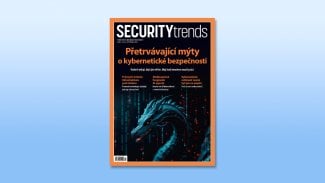ldapmodrdn
NAME
ldapmodrdn - LDAP rename entry tool
SYNOPSIS
ldapmodrdn
[\c
R -r ]
[\c
I -s newsup]
[\c
R -n ]
[\c
R -v ]
[\c
R -c ]
[\c
R -M[M] ]
[\c
I -d debuglevel]
[\c
I -D binddn]
[\c
R -W ]
[\c
I -w passwd]
[\c
I -y passwdfile]
[\c
I -H ldapuri]
[\c
I -h ldaphost]
[\c
I -p ldapport]
[\c
I -P 2|3]
[\c
R -O security-properties ]
[\c
R -I ]
[\c
R -Q ]
[\c
I -U authcid]
[\c
I -R realm]
[\c
R -x ]
[\c
I -X authzid]
[\c
I -Y mech]
[\c
R -Z[Z] ]
[\c
I -f file]
[\c
dn rdn]
DESCRIPTION
ldapmodrdn
is a shell-accessible interface to the
ldap_modrdn2(3)
library call.
ldapmodrdn
opens a connection to an LDAP server, binds, and modifies the RDN of entries.
The entry information is read from standard input, from file through
the use of the
-f
option, or from the command-line pair dn and
rdn.
OPTIONS
-r
Remove old RDN values from the entry. Default is to keep old values.
I -s newsup
Specify a new superior entry. (I.e., move the target entry and make it a
child of the new superior.) This option is not supported in LDAPv2.
-n
Show what would be done, but don't actually change entries. Useful for
debugging in conjunction with -v.
-v
Use verbose mode, with many diagnostics written to standard output.
-c
Continuous operation mode. Errors are reported, but ldapmodrdn
will continue with modifications. The default is to exit after
reporting an error.
-M[M]
Enable manage DSA IT control.
-MM
makes control critical.
-d debuglevel
Set the LDAP debugging level to debuglevel.
ldapmodrdn
must be
compiled with LDAP_DEBUG defined for this option to have any effect.
-f file
Read the entry modification information from file instead of from
standard input or the command-line.
-x
Use simple authentication instead of SASL.
-D binddn
Use the Distinguished Name binddn to bind to the LDAP directory.
-W
Prompt for simple authentication.
This is used instead of specifying the password on the command line.
-w passwd
Use passwd as the password for simple authentication.
I -y passwdfile
Use complete contents of passwdfile as the password for
simple authentication.
I -H ldapuri
Specify URI(s) referring to the ldap server(s); only the protocol/host/port
fields are allowed; a list of URI, separated by whitespace or commas
is expected.
I -h ldaphost
Specify an alternate host on which the ldap server is running.
Deprecated in favor of -H.
I -p ldapport
Specify an alternate TCP port where the ldap server is listening.
Deprecated in favor of -H.
I -P 2|3
Specify the LDAP protocol version to use.
I -O security-properties
Specify SASL security properties.
-I
Enable SASL Interactive mode. Always prompt. Default is to prompt
only as needed.
-Q
Enable SASL Quiet mode. Never prompt.
I -U authcid
Specify the authentication ID for SASL bind. The form of the ID
depends on the actual SASL mechanism used.
I -R realm
Specify the realm of authentication ID for SASL bind. The form of the realm
depends on the actual SASL mechanism used.
I -X authzid
Specify the requested authorization ID for SASL bind.
authzid
must be one of the following formats:
dn:\c
<distinguished name>
or
u:\c
<username>
I -Y mech
Specify the SASL mechanism to be used for authentication. If it's not
specified, the program will choose the best mechanism the server knows.
-Z[Z]
Issue StartTLS (Transport Layer Security) extended operation. If you use
-ZZ\c
, the command will require the operation to be successful.
INPUT FORMAT
If the command-line arguments dn and rdn are given, rdn
will replace the RDN of the entry specified by the DN, dn.
Otherwise, the contents of file (or standard input if
no
-f
flag is given) should consist of one or more entries.
Distinguished Name (DN)
Relative Distinguished Name (RDN)
One or more blank lines may be used to separate each DN/RDN pair.
EXAMPLE
Assuming that the file
/tmp/entrymods
exists and has the contents:
cn=Modify Me,dc=example,dc=com
cn=The New Me
the command:
ldapmodrdn -r -f /tmp/entrymods
will change the RDN of the "Modify Me" entry from "Modify Me" to
"The New Me" and the old cn, "Modify Me" will be removed.
DIAGNOSTICS
Exit status is 0 if no errors occur. Errors result in a non-zero exit
status and a diagnostic message being written to standard error.
SEE ALSO
AUTHOR
The OpenLDAP Project <http://www.openldap.org/>
ACKNOWLEDGEMENTS
OpenLDAP
is developed and maintained by The OpenLDAP Project (http://www.openldap.org/).
OpenLDAP
is derived from University of Michigan LDAP 3.3 Release.



















